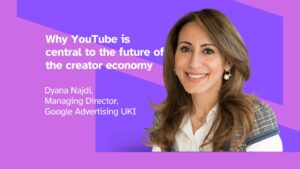by Thomas Peham, VP of Marketing at enterprise CMS Storyblok
There’s no doubt that social media platforms such as Facebook, Twitter, TikTok and Instagram are incredibly powerful marketing tools in terms of helping businesses reach millions of potential customers easily, quickly and cost-effectively. But they do come with a critical drawback that content creators need to always keep in mind – social media is an incredibly dynamic sector with the future of any platform, no matter how popular, far from guaranteed.
Those who have been in the sector a bit longer will of course remember the domination of sites like MySpace or Bebo or chat services like MSN Messenger. As quickly as they rose to prominence they disappeared off the culture radar, supplanted by a new generation of platforms. This natural churn may not seem too much cause for concern, given the rise and fall of sites can usually be telegraphed many months or years in advance. However, recently a new factor has emerged that has introduced much more uncertainty – government intervention. We have seen how many countries have begun to target some social media platforms with restrictions. TikTok, for example, has been banned in a number of countries and even one US state.
For content creators this introduces a lot of uncertainty and risk. Those that have built an audience concentrated on one platform could quickly find it, and their livelihoods, wiped out. Similarly, content creators who have specialised in developing content for one platform may find that their skills quickly become redundant.
So how can content creators and brands protect themselves in this ever changing environment? The first, most obvious answer is to diversify the channels that you disseminate your content on.
For example, if TikTok is your predominant platform of choice with an established, engaged following you should begin to expand your brand’s reach by disseminating content onto other platforms such as Instagram, YouTube, or Twitter. What’s great here is that it’s relatively easy to repurpose TikTok content for this audience and similar functions like Instagram’s Reels or Facebook Stories feature can provide an alternative home for short, creative videos.
Of course, migrating followers to these platforms will require strategic communication and clever branding. It stands to reason that people will only consistently follow a creator or brand on one platform if the content on each channel isn’t identical. After all, why would you watch the same video on multiple platforms? Consequently, varying the content slightly is essential. This doesn’t necessarily mean creating entirely new bespoke videos. It could be as simple as running content daily on one platform and weekly compilations on another. As with all good marketing the starting point is research. You need to identify the platforms where your key audience has the greatest overlap. From there you can determine the most time efficient way to reach both platforms while also ensuring that your calls to action push users to follow you on every channel.
Alongside this, creators, if they aren’t already, should prioritise building personal connections with followers, through methods such as direct engagement via newsletters or personal blogs.
Consumers respond to personalisation. They want content that engages them from the offset, anticipates their needs and provides them with relevant products and services as part of a seamless digital journey. Through targeted, personalised activity it becomes possible to build a more meaningful connection with your audience and reduce reliance on third-party platforms.
Additionally, live streaming on platforms such as Twitch offers a great alternative for those seeking to maintain real-time interactions.
The final part of the puzzle is to strengthen the platform that you own – your website and tech stack. After all, a website no longer serves just a basic online presence – it’s your shop front, transaction point, and the face of your brand. Your CMS is the central content hub for all your communications and marketing outputs. Ultimately, your marketing effectiveness is only ever as good as the technology that underpins it. The big mistake many companies make is in thinking that getting a big tech stack from a well-known brand is the best and easiest way to enable a successful marketing output. Not only is this usually an expensive approach, but it may also mean being locked into using products that don’t fit your changing needs.
Instead, there are now a huge range of new solutions available that, via APIs, can usually be easily integrated together. This means you have the freedom to build a suite of tools that work for you. In addition, you also have the flexibility to swap out different solutions as your outreach develops.
What you need comes down to how you think about the future of your creative and brand goals. As the evolving creator economy continues to push for more personalisation and owned content, creating a suite of tools that enables you to amend content quickly and easily is fundamental. So too is the ability to leverage existing audience data and other information streams to provide tailored and relevant messages. A headless CMS that is flexible enough and can output content in different channels enables this type of marketing strategy.
It is often said not to put all your eggs in one basket, especially if you don’t own the basket. In a similar way, placing all of your marketing efforts on one or even two social media channels is always risky business. After all, algorithms can change, features can come and go, and chances are some platforms may not even be around in years to come. Rather the recommendation is for businesses to spread their efforts widely and harness the full potential of their own platforms in order to build confidence in what remains an uncertain creator economy.












